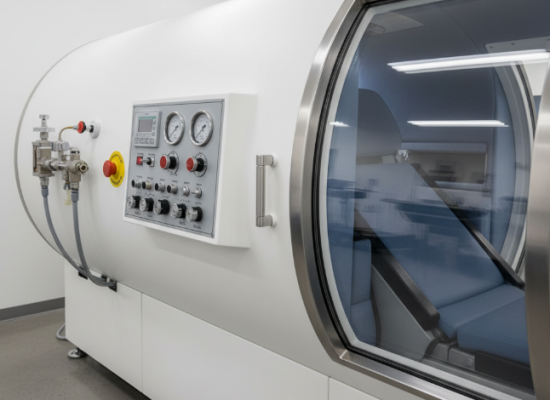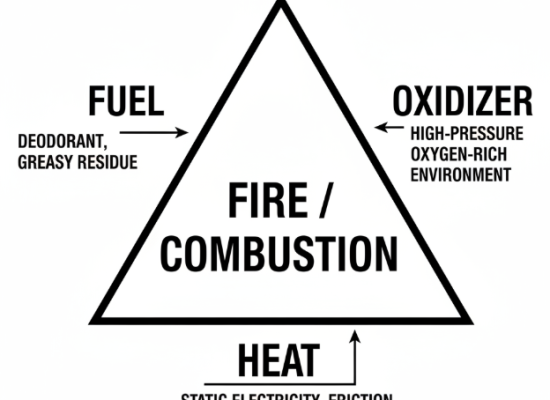HBOT Cost: A Professional Price Transparency Guide
As the head of a professional hyperbaric oxygen treatment center, I know that cost is the most concerned issue when considering HBOT (hyperbaric oxygen therapy). The core philosophy of our center is professionalism and transparency. Below I will directly disassemble the price composition of hyperbaric oxygen therapy for everyone.
price of hyperbaric oxygen therapy
For a single-person hard chamber (medical-grade hyperbaric oxygen chamber), the cost of a single treatment is roughly between $200 and $500. However, due to a variety of factors, the fees of different clinics in each region are also different.
Key factors affecting prices
Geographical factors
Metropolitan high-cost areas (e. g., New York, Los Angeles, San Francisco): In these high-cost-of-living areas, the cost of operating an HBOT center is extremely high, so the charge for a single treatment is naturally high, usually close to $400 to $500 or more.
Small and medium-sized cities or areas with high competition for clinics: In these areas, operating costs are low, and the price of a single treatment is about US $200 to US $300.
Service Provider Type
- Hospitals: Most insurance is usually accepted, and the price of a single treatment may look lower. However, the process can be complex and the focus is primarily on emergencies or specific indications.
- Independent clinics: prices vary the most and quality varies. Some take customers at low prices, others charge high fees for high-end services and usually do not accept any insurance.
- Professional diagnosis and treatment center: pricing power in our own hands, the price is flexible.
For example, we focus on providing high standards of professional service, equipped with top equipment and professional operation team, and the cost usually reflects this high investment. But most mainstream insurance will be accepted, and out-of-pocket costs are not very high.
Pressure chamber type

Medical grade hard shell hyperbaric chamber
- Pressure Standard: Must meet and exceed 2.0 ATA (absolute atmospheric pressure), up to 3.0 ATA. Reaching this pressure is key to treating serious diseases, such as decompression sickness, carbon monoxide poisoning, and certain types of osteonecrosis.
- Structure and material: The cabin is a rigid structure, usually made of pressure-resistant steel or thick acrylic. Manufacturing, installation, and maintenance costs are extremely high, and strict medical device standards need to be met.
- Oxygen Delivery: The patient breathes 100 percent purity medical oxygen in the cabin. High pressure combined with high purity oxygen can physically dissolve enough oxygen into the plasma according to Henry’s law, so that it can be transported to the deepest tissues of the body that lack oxygen.
- Price: High equipment costs, complex safety certifications, a professional operating team, and high-purity oxygen consumption make the cost of a single hard cabin treatment naturally maintained at a high level.
Mild soft shell hyperbaric chamber
- Pressure standard: The upper pressure limit is usually limited to between 1.3 ATA and 1.5 ATA.
- Structure and material: The cabin is flexible, similar to an inflatable bag, and is usually made of durable nylon or polyurethane materials. The equipment is relatively inexpensive and easy to install and transport.
- Oxygen delivery: The cabin is usually pressurized with ambient air, and the patient may inhale pure oxygen or oxygen-enriched air through a mask. Due to the low pressure, even if pure oxygen is inhaled, the amount of dissolved oxygen in the blood is much lower than the hard cabin standard.
- Price: Lower equipment and operating costs make the cost of a single treatment significantly lower than that of a hard cabin, which is only about 30% to 50% of the price of a hard cabin. However, such devices are more suitable as “health care” or “sub-health management” tools, rather than treating the serious medical indications targeted by the hard capsule. Low pressure determines its limitations in the medical field.
Treatment Protocol

Acute emergency management (eg, acute carbon monoxide poisoning, diving decompression sickness):
- Length and frequency of treatment: Usually 3 to 5 emergency treatments are completed in a very short period of time (e. g. within 24 hours).
- Price range: This can significantly increase operating costs due to the need to immediately mobilize professional staff and equipment resources for emergency queue processing. Therefore, although the number of courses is small, the cost of a single treatment is usually highest in the emergency mode.
Chronic wounds that are difficult to heal (eg, diabetic foot ulcers, radiation tissue damage):
- Length and frequency of treatment: This is typically a chronic, progressive treatment that requires time for tissue regeneration. International standards and experience usually recommend 20 to 40 treatments. The frequency of treatment is usually once daily for several weeks.
- Price range: Because the course of treatment is longer and follows the standard agreement, the package price is usually provided, and the converted single price will be much cheaper than the scattered purchase.
Neurological rehabilitation (eg, stroke sequelae, brain injury rehabilitation):
- Length and frequency of treatment: The repair and regeneration of the nervous system is a long process, and the course of rehabilitation often requires 40 or more times, and after the completion of the initial course of treatment, periodic maintenance treatment may be required.
- Price range: In order to encourage patients to adhere to long-term treatment to achieve the best rehabilitation effect, there are special long-term packages, and the corresponding word discount is also the largest.
Health management and exercise recovery (off-label applications):
- Length and frequency of treatment: The treatment is very flexible, usually only 5 to 10 times, or even on demand.
- Price impact interpretation: this type of non-FDA indications of the application, entirely at their own expense, there is no insurance reimbursement. But most only require mhbot therapy at your own expense, and usually do not involve large-scale discounts, and the price is closer to the retail price of a single service.
Is an FDA Indication
If you are treating an FDA-approved indication, there is a high probability that you will receive a percentage of insurance reimbursement.
FDA specific indications are detailed in the following table
| No. | FDA Approved Indication | Interpretation/Description |
| 1 | Air or Gas Embolism | Gas bubbles obstructing blood flow in the vessels, often post-surgery or trauma. |
| 2 | Carbon Monoxide Poisoning (Acute) | Especially for severe cases or those with neurological symptoms. |
| 3 | Carbon Monoxide Poisoning Complicated by Cyanide Poisoning | Compound poisoning requiring urgent intervention. |
| 4 | Central Retinal Artery Occlusion | Sudden vision loss requiring immediate treatment. |
| 5 | Crush Injury, Traumatic Ischemia, and Acute Traumatic Problems | Severe limb injuries leading to poor circulation and potential amputation risk. |
| 6 | Decompression Sickness (The Bends) | Commonly experienced by divers or high-altitude flyers. |
| 7 | Compromised Skin Grafts and Flaps | To save skin grafts or flaps that are failing due to poor oxygenation. |
| 8 | Severe Anemia (When Transfusion is Impossible/Uncontrolled Bleeding) | An adjunct treatment when blood transfusions cannot be given. |
| 9 | Necrotizing Soft Tissue Infections (Gas Gangrene) | Rapidly progressing, life-threatening bacterial infections. |
| 10 | Refractory Osteomyelitis | Chronic bone infection that has failed to resolve with standard therapies. |
| 11 | Delayed Radiation Injury (Late Tissue Injury) | Tissue damage that appears months or years after radiation therapy (e.g., radiation cystitis, proctitis). |
| 12 | Non-Healing Wounds | Wounds that have failed to heal after standard measures (e.g., debridement, proper dressings), most commonly diabetic foot ulcers. |
| 13 | Intracranial Abscess (Adjunctive Therapy) | Used alongside standard antibiotic and surgical management. |
| 14 | Thermal Burns (Severe) and Select Acute Burns | Specific degrees and extents of burns to improve tissue oxygenation. |
Other options for HBOT therapy
Purchase Hyperbaric Oxygen Chamber for Home

The initial cost of a new, better quality home hyperbaric oxygen chamber is not low, usually ranging from thousands to tens of thousands of dollars. What’s more, this is the 1 specialized medical device with limited resale value and high depreciation rates.
The key is that almost all household equipment on the market is a low-pressure soft cabin. They simply do not meet the 2.0 ATA pressure standards recognized by the FDA and the medical community as necessary for the treatment of life-threatening conditions or serious chronic diseases.
If you are seeking HBOT treatment for serious medical reasons listed in the FDA list, the home soft capsule is not a medically effective alternative to professional hard capsule treatment.
Rent Hyperbaric Chamber
The rental market is almost entirely occupied by low-pressure soft cabins. Due to the complexity of medical-grade hard cabins, huge installation requirements, and significant legal responsibilities, they are rarely rented for home use.
If your treatment regimen is short-lived (for example, less than a month of health management), leasing may save money.
However, if your medical needs require a standard course of chronic disease (20 to 40 sessions in two months), the accumulated monthly rent, oxygen costs, and setup costs will usually add up to the cost of buying a discounted long-term package at a specialty center.






No Comment! Be the first one.